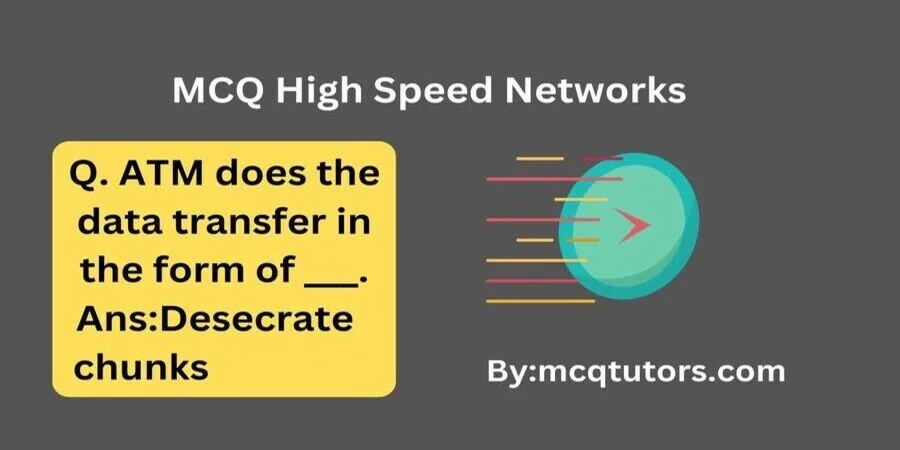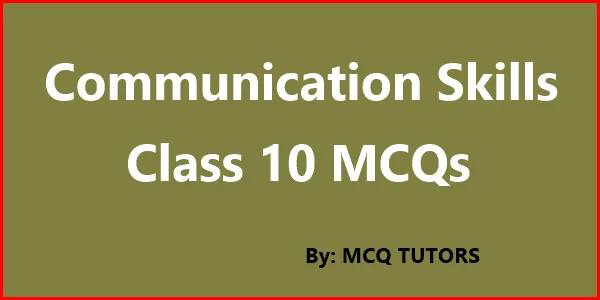Are you looking for the best High Speed Networks MCQs with Answers to brush up on your knowledge? Then you have come to the right place! In this article, we are going to explore a collection of High Speed Networks Multiple Choice Questions (MCQs) with answers to help you enhance your understanding of the topic.
We have gathered a list of carefully selected and verified MCQs from experts in the field that will help test your knowledge on High Speed Networks. Whether you’re preparing for exams or looking for AI tools like hausarbeit schreiben lassen ki (German for “have a term paper written by AI”), mastering these concepts can support both academic and technical writing.

High Speed Networks MCQs with Answers
1. In circuit switching most of time link may be idle because portion of its time is devoted to the connection that is idle (True/False)
Ans: True
2. In circuit switching, channel bandwidth is reserved for an ___.
Ans: Information Flow
3. With packet switching, data are transmitted in short blocks, called ___
A. packets
B. frame
C. information
D. None of the above
Ans: a) packets
4. Each X.25 packets contains up to 128 bytes of data. (True/False)
Ans: True
5. In virtual circuit approach, all the packets follow the pre-planned path to reach the intended destination (True/ False).
Ans: true
6. In some datagram network it is up to the destination rather than the exit node to do the reordering (True/ False)
Ans: True
7. Due to streamlining the communications process in frame relay approach, ___and ___ is achieved
Ans: Lower delay, higher throughput
8. Through the LAPF control protocol user will able to choose to select additional data link or network-layer end-to-end function (True/False).
Ans: True
9. LAPF stands for ___
Ans: Link Access Procedure for Frame Mode Bearer Services
10. Traditional X.25 oriented packet switching networks entailed significant protocol overheads and have historically been too slow – primarily supporting low-speed terminals at ___kbps and lower
a) 19.2
b) 18.2
c) 10.2
d) ?
Ans: a) 19.2
11. The process of setting a virtual path connection is decoupled from the process of setting up an individual virtual channel connection (True/False)
Ans: True
12. ATM does the data transfer in the form of ___.
Ans: Desecrate chunks
13. A switched connection is an on demand connection which requires call ___ for set up and exit
A. packets
B. control signaling
C. information
Ans: b) Control Signaling
14. The meta-signaling channel can also be used to set up the user-to-user signaling channel. (True/False)
Ans: True
15. The process of setting a virtual path connection is decoupled from the process of setting up an individual virtual channel connection (True/ False).
Ans: True
16. The use of GFC field is to control the traffic flow at the ___ interface in order to improve short-term overload condition
Ans: user-network
17. The header error control (HEC) field is carried in the final octet of the header (True/False).
Ans: true
18. The VPI length of 8 bits allows up to ___ different virtual paths.
Ans: 256
19. The ATM cell header is composed of ___elements
a) 8
b) 6
c) 4
d) All the above
Ans: b) 6
20. The ABR service category is designed primarily for any type of traffic that is not ___sensitive and expects no guarantees of service
Ans: Time
21. ATM network are designed in such a way that it support to transfer many different type of traffic concurrently (True/False).
Ans: True
22. nrt-VBR stands for ___
Ans: Non-real time variable bit rate
23. The most recent addition to the set of ATM service categories is
a) ABR
b) UBR
c) GFR
Ans: C
24. This layer is organized in two logical sub layers: the ___and ___ sub layer
Ans: Convergence sub layer, segmentation-reassemble sub layer
25. AAL 1 is designed to accommodate constant bit rate, connection-oriented, synchronous traffic. (True/False).
Ans: True
26. The main task of AAL is ___
Ans: Segmentation and reassemble
27. AAL2 supports a connection-oriented service in which the bit rate is variable but requires a bounded delay for delivery. (True/False).
Ans: True
28. Legacy ATM LAN architecture uses ATM as a backbone to connect traditional LANs. (True/False)
Ans: True
29. Generally, ATM switches offer only congestion control features. (True/False)
Ans: False. Generally, switches offer both traffic management and congestion control features.
30. NAS devices do not use a full network OS. (True/False).
Ans: True
31. We can attach storage devices to a NAS using a high-speed bus like ___
Ans: Small Computers System Interface (SCSI)
32. NAS can increase the availability of data by using ___ or ___.
Ans: RAID, Clustering
33. WLAN uses ___ technology to transmit and receive data.
Ans: Radio frequency (RF)
34. The technologies for wireless LANs are specified by the ___ group of standards. (Pick the right choice).
a) IEEE 803.11
b) IEEE 802.11
c) IEEE 802.22
d) IEEE 803.22
Ans: b) IEEE 802.11
35. PCs usually use mini PCI, PC card, and CF adaptors. (True/False)
Ans: False. Laptops usually use mini PCI, PC card, and CF adaptors.
36. The Wi-Fi location from which the users can connect to the wireless network is called a____.
Ans: Wi-Fi hotspot
37. ___ are the fundamental communication grid for digital traffic.
Ans: LAN switches
38. Layer-2 switches need to store and replicate updates to routing tables accurately. (True/False)
Ans: False. Layer-3 switches need to store and replicate updates to routing tables accurately.
39. Brownian motion process is a familiar process that satisfies the definition of self-similarity. (True/False)
Ans: True40. Which among the following is considered as the simplest heavy-tailed distribution? (Pick the right option).
a) Poisson distribution
b) Pareto distribution
c) Jackson’s theorem
d) Brownian motion process
Ans: b) Pareto distribution
41. Congestion in a network or internetwork happens as the routers and switches include queues-buffers that contain the packets prior to and after processing. (True/False)
Ans: True
42. ___ are the most common causes of bottlenecks in a network.
Ans: Inter-domain links
43. Packets queued for output is transmitted quickly using ___
Ans: Statistical Time Division Multiplexing
44. Since flow control is a powerful tool, it must be used efficiently to manage the traffic on the entire network. (True/False)
Ans: True
45. At negligible load, there exists a small constant amount of delay that consists of ___through the network from source to destination and processing delay at every node.
Ans: Propagation delay
46. Power indicates that, normally, a congestion control scheme and a ___ resulting in higher throughput also cause higher delay.
Ans: Network configuration
47. Practically, buffers are infinite resulting in buffer overflow. (True/False).
Ans: False. Practically, buffers are finite resulting in buffer overflow.
48. The ___of various nodes continue to grow as the load on the network increases.
Ans: Queue lengths
49. ___mechanism is applied at different layers in a network to serve different objectives.
Ans: Congestion control
50. ___ is used in connections whose traffic characteristics are specified accurately and performance requirements are known before. (Pick the right option).
a) Open-loop control
b) Closed-loop control
c) Traffic policing
d) Hardware flow control
Ans: a) Open-loop control
Conclusion
High Speed Networks MCQs with Answers is a comprehensive and detailed document that can help anyone interested in learning more about this type of technology.
It provides a comprehensive overview of the topics, including key concepts and definitions, as well as multiple-choice questions to test your knowledge.
This document can be an invaluable resource for anyone looking to build their understanding of high speed networks, allowing them to gain the skills and knowledge necessary for success.
You may like more MCQs



